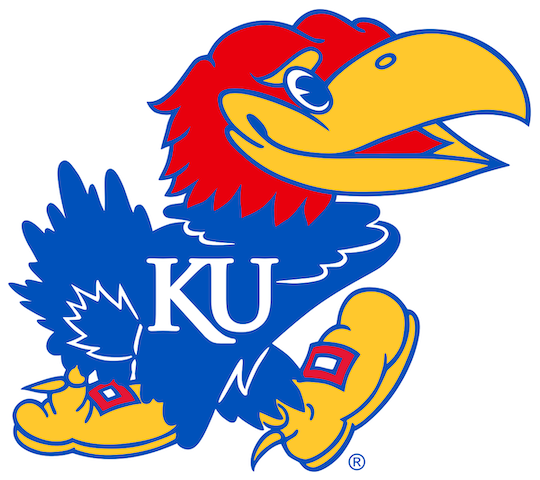RCW: Fifty Years in the Making
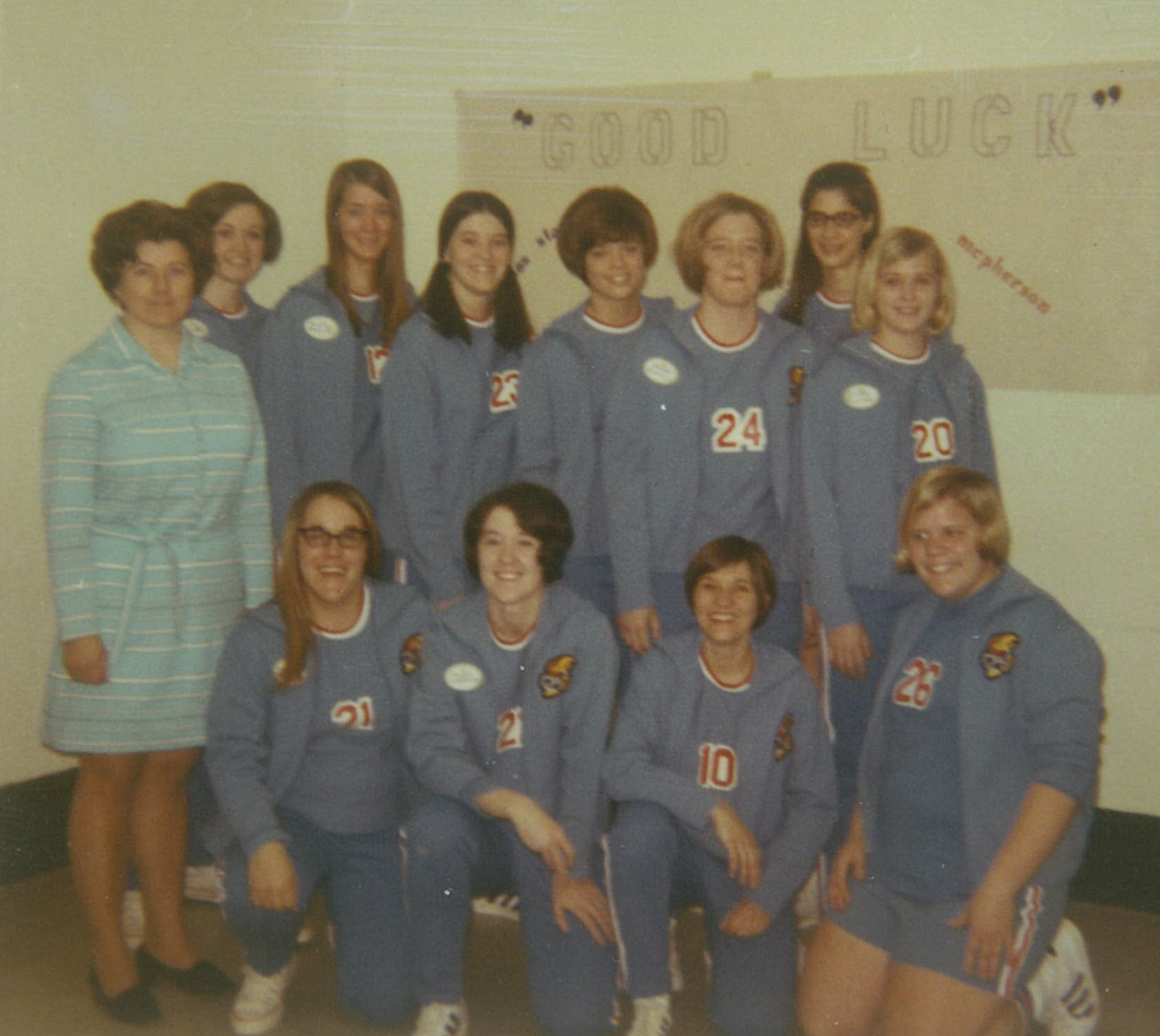
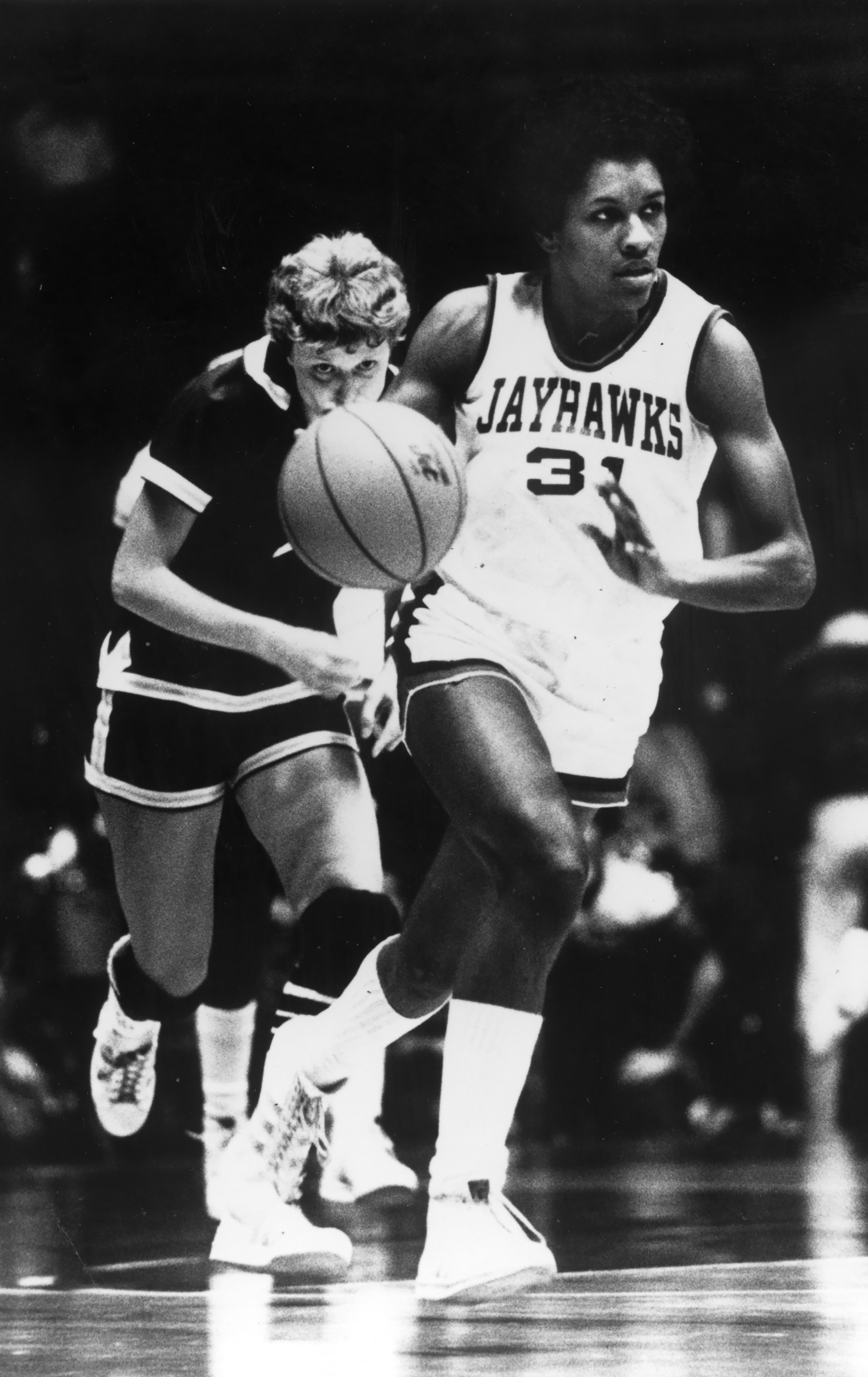

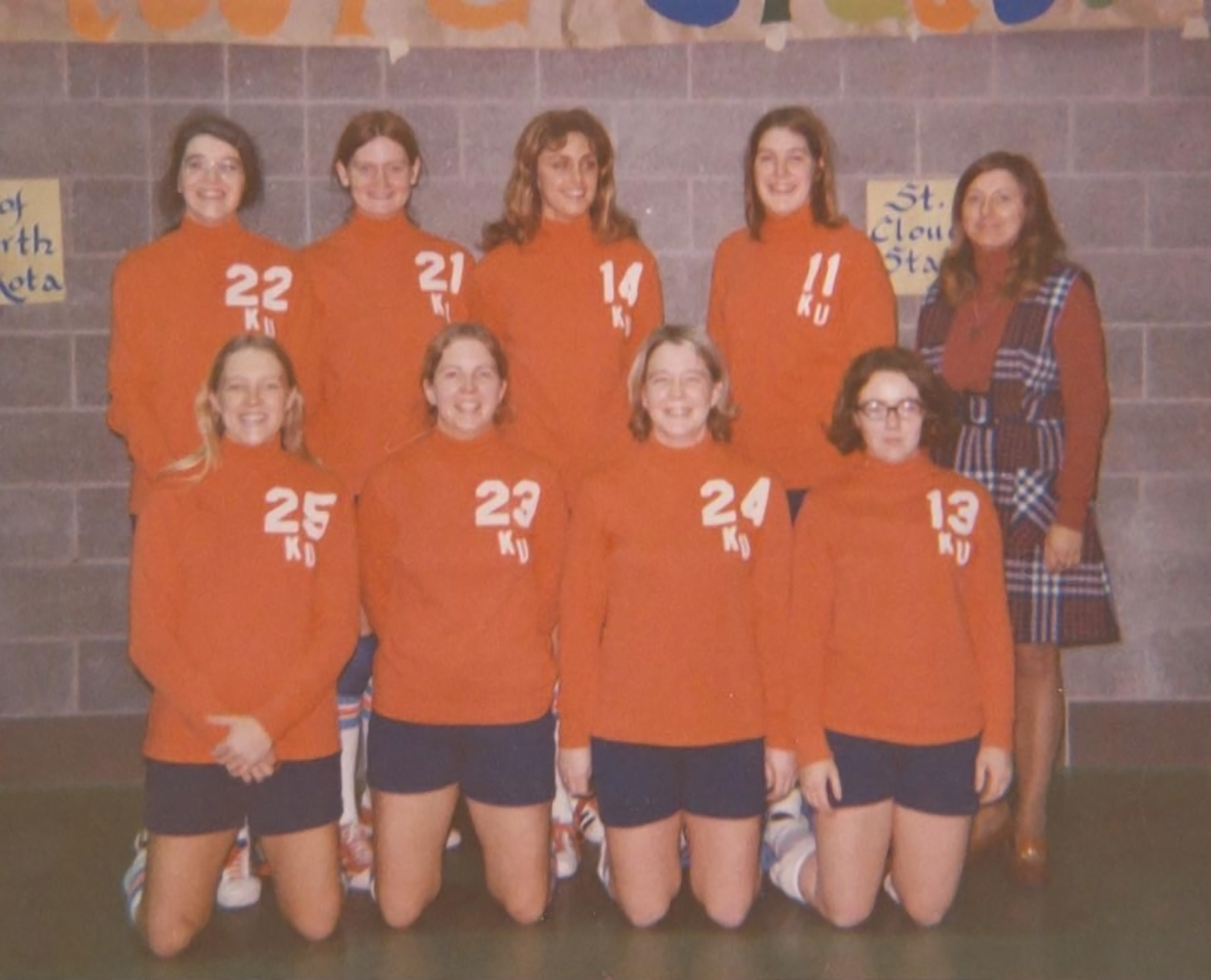
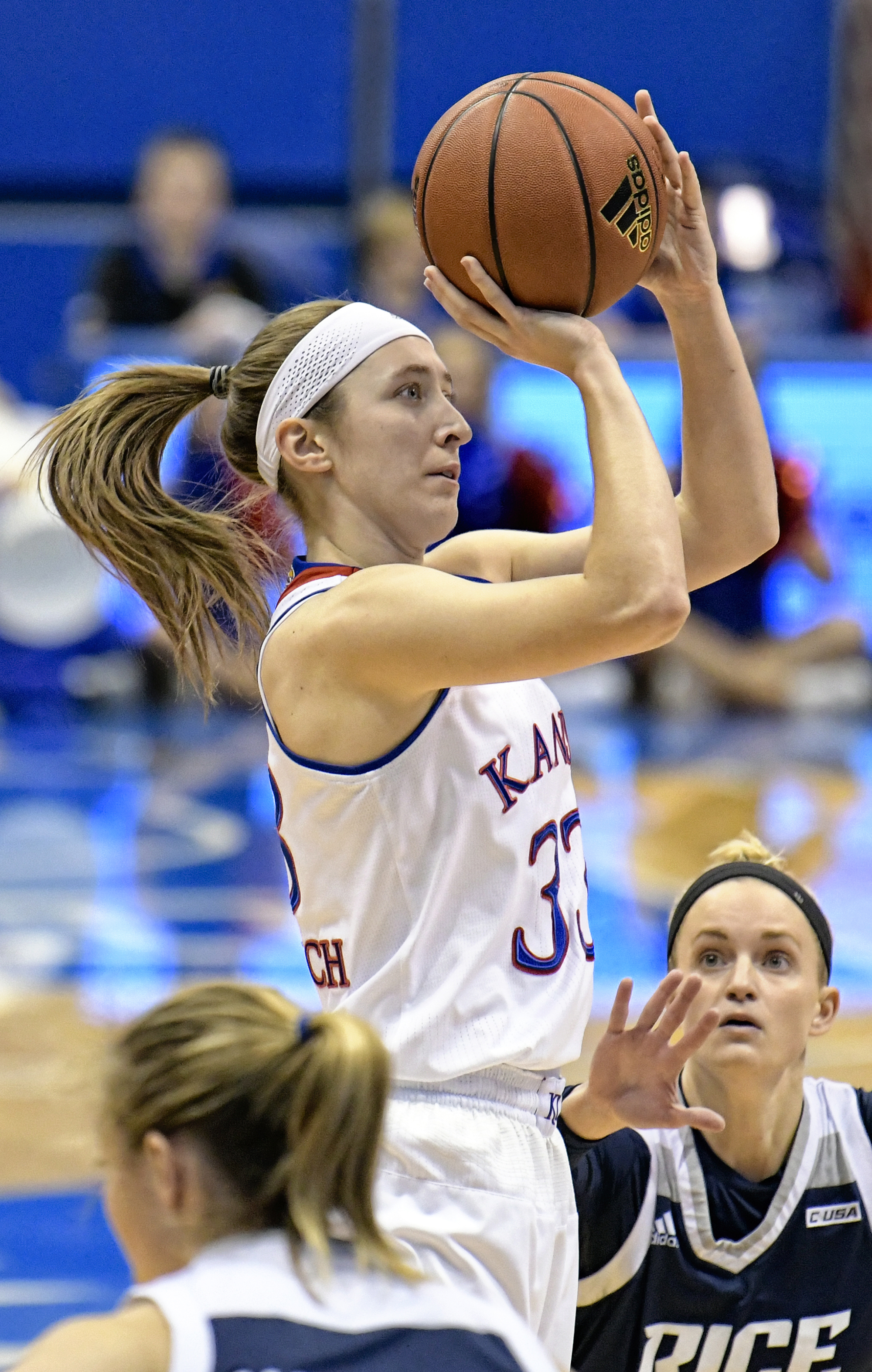
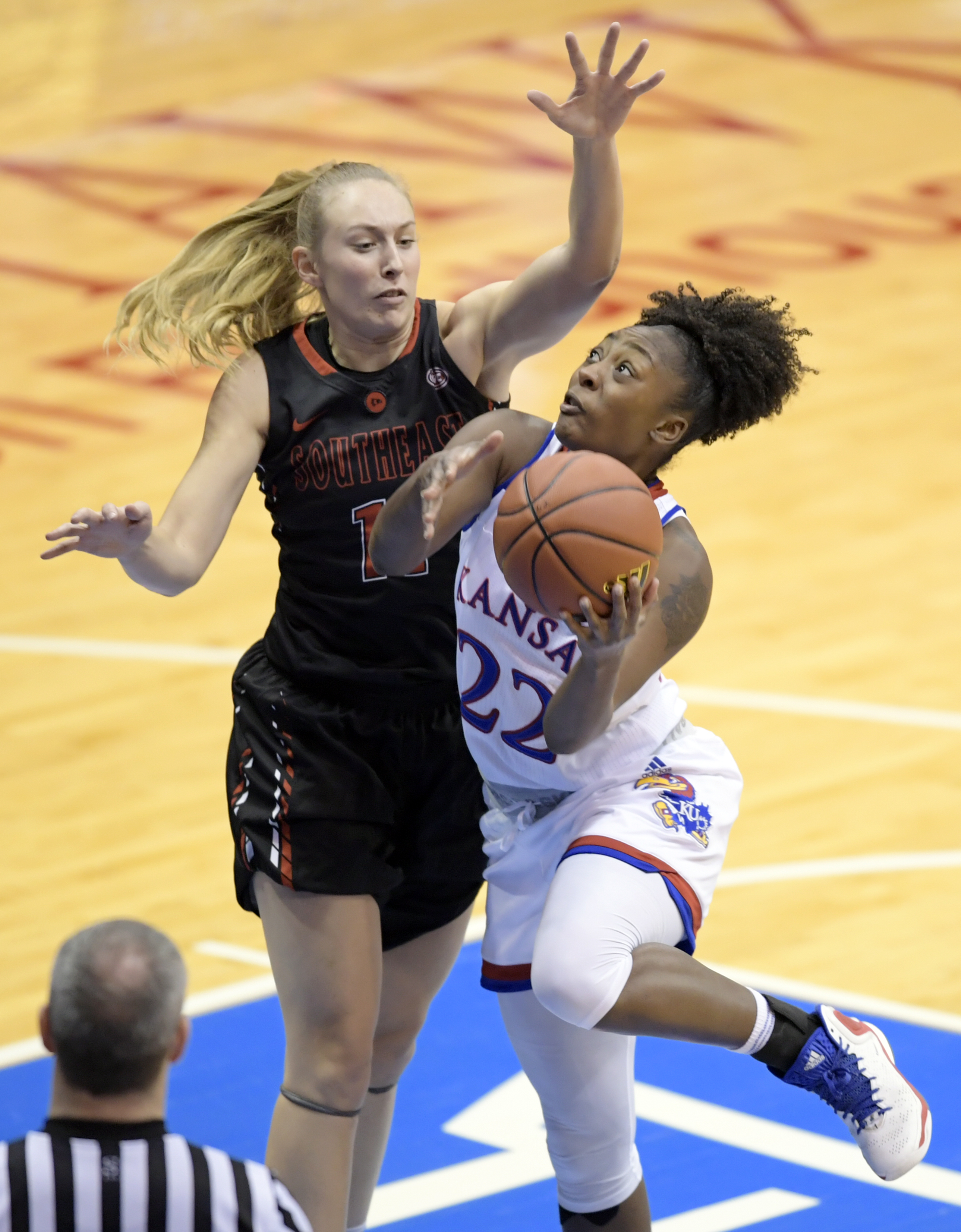
Fifty years ago, Marlene Mawson came to the University of Kansas to start a women’s athletic department that would change the lives of so many women over the next five decades.
The women’s athletic department started out small with just six sports and a $2,000 budget. Such a little budget caused the women to have to borrow equipment from the physical education department, share uniforms between three different sports and travel to postseason tournaments – all on their own dime.
“We purchased one set of uniforms that might fit all the women in all of the sports,” Mawson said. “Sometimes we would have a volleyball game before a basketball game so our manager would have to launder them in between.”
At the time, coaching positions of women’s sports were all on a volunteer, unpaid basis, but that didn’t stop Mawson from coaching five sports, many of which competed at the same time during the year: volleyball (1968-70, 1972-74), basketball (1968-71), softball (1968-70), field hockey (1969-71) and tennis (1971).
However, basketball had always held a special place in Mawson’s heart, ever since she participated in the Cass County annual basketball tournament and saw that her dream of becoming a basketball coach could eventually become a reality.
“The very first time I saw a woman coach was at a local basketball tournament and I knew that that’s what I wanted to do,” Mawson said.
By the time Mawson arrived at KU, she already had an extensive coaching background from attending a national coaching institute held every few years. During the fourth institute in 1966, women still played 4-on-4 half-court basketball. A few years later there was an experimental rule put into place that allowed the women to play full-court with five players.
Mawson’s goal of becoming a coach not only came to fruition, but she went on to be one of the best of her time. In only her third season as Kansas women’s basketball coach, she led her team to Nationals.
The team was able to scrounge up enough money to lease two station wagons; they bought sleeping bags and air mattresses so the women could take turns sleeping during the 20-hour drive to North Carolina. Once there, the women slept in the second-floor lounge of a women’s dormitory at a nearby university and paid for their own meals in the dorm cafeteria.
“That experience was one of my most nostalgic remembrances of early pioneer basketball for women at KU,” Mawson said.
Mawson set the foundation of the women’s basketball program at Kansas, but it was the fourth head coach in program history that elevated the Jayhawks to a powerhouse. Marian Washington led Kansas women’s basketball from 1973 to 2004 and recruited numerous record-setting Jayhawks including Lynette Woodard, Tamecka Dixon, Lynn Pride and more. In her 31 year career at KU, Washington led the Jayhawks to six conference titles and 16 postseason appearances, including two trips to the NCAA Sweet 16.
Five decades later, the women’s basketball team and all of the other women’s sports programs on Kansas’ campus are equipped with all the resources they need to compete and succeed at the highest level and then some.
“All the things these student-athletes are provided with in regards to strength and conditioning, nutrition, the amount of equipment, gear and all the resources to help with academic success is tremendous. They understand that they are provided with a lot and they’re grateful for that,” women’s basketball assistant coach Katie O’Connor said.
Along with all the materialistic advantages that have come in the last 50 years for women’s basketball, the support and enthusiasm for the women’s program has grown.
“We can’t dunk or alley-oop, but taking charges is something we’re big on and it gets everyone hyped,” junior guard Kylee Kopatich said. “People come to see our work ethic and our toughness and togetherness.”
Although Mawson’s coaching career at Kansas ended after the national title run in 1971, 10 years later she got back in the coaching ring when she was asked by former Kansas guard Cheryl Burnett to coach an Amateur Athletic Union (AAU) team. Burnett had finished her eligibility and began student teaching, but didn’t want to give the game up just yet. Because there was no professional league for women, Burnett asked other top players from around the area if they, too, wanted to continue their basketball careers beyond college. The women dominated leagues in Topeka and Kansas City, with Mawson leading them all the way to Nationals yet again.
“They were fun to coach because they all understood what it required for teamwork and what basketball skills were needed to be great,” said Mawson. “They had it all and they were the best.”
These days, young athletes and coaches are familiar with the AAU circuit, as it is now not unusual for college-bound athletes to compete at the AAU level for years.
“Playing club ball was becoming much more available for my generation,” O’Connor said. “There are now a lot more opportunities and exposure afforded to them earlier in their lives.”
Today, the opportunities for young women in sports are nearly endless. Because of Mawson’s dedication to women’s athletics, there have been decades worth of strong and talented female athletes for current Kansas women’s basketball players to look up to.
Just like Mawson looked up to the first female basketball coach she saw in high school, Kopatich and senior forward Chayla Cheadle admire some of Kansas’ past greats.
Living in Olathe, Kansas, where she grew up playing basketball, Kopatich had the opportunity to watch and learn from one of her favorite Jayhawks, Natalie Knight. While playing for the same high school coach just a few years apart, Kopatich saw the success Knight had and knew that one day, Knight’s success could soon be her own.
“To know Natalie committed to KU as a sophomore made me realize that I could do that too,” Kopatich said. “I could go Division I and play in the Big 12 Conference, just like Natalie did.”
Kopatich did not only follow in Knight’s footsteps to Kansas, but she is also following Knight into the 1,000-point club. Kopatich is less than 200 points away from being the 29th Jayhawk in Kansas women’s basketball history to score 1,000.
For Kopatich, it was geography that linked her to Knight, but for Cheadle, it was the name she wears across her chest every game day that brought her together with her role model.
Cheadle was lucky enough to have the chance of meeting one of the best basketball players Kansas women’s basketball has seen in its 50 years: Lynette Woodard.
“Everyone knows that Lynette Woodard is one of the greatest women’s basketball players there is and for her to wear a Kansas uniform, it is an honor to have a role model who I can reach out to,” Cheadle said.
Woodard paved the way for so many, not just here at Kansas, but throughout the entire nation as she continues to coach and inspire young athletes.
“Her work ethic and determination pioneered women’s basketball and what she was able to accomplish here at KU is incredibly special,” O’Connor said. “As a player, as a coach and as a person she’s continuing to touch lives.”
Along with sharing the Kansas jersey with greats like Woodard, Cheadle also has the unique opportunity to experience the Kansas tradition with her twin sister, a former middle blocker for the volleyball team, Kayla Cheadle.
“To be able to say that we are here together is just a great opportunity,” said Cheadle. “I have a ton of friends back home and they look up to us for how hard we’ve worked and where we are today.”
Although some aspects of the game of basketball have exponentially changed over the last 50 years, the core values have remained the same.
“We want them to experience basketball, play at a high level and compete academically,” O’Connor said. “There is a responsibility that I feel to pass down some of those things that I learned in my playing days and athletic experience.”
As far as women’s athletics has come in the last 50 years, there are still things that can be done in order to take that next step in advancing women’s basketball even further.
“I think that the ceiling is rising and that’s special,” O’Connor said. “We are seeing more females in high-position jobs, we are seeing some cross over into the male athletic world and the ability to continue to foster those things is incredibly important.”
For Mawson, she is still in awe of how far women’s athletics have come since she started Kansas’ program in 1968. Women went from not being able to use the facilities in Allen Fieldhouse to having state-of-the-art facilities at Rock Chalk Park.
“When I first saw Rock Chalk Park, I was overwhelmed,” Mawson said. “It was surreal to look at the soccer and softball fields and to think that this was built only for women. I would never have thought that would happen in my lifetime.”
Almost 40 years have passed since Mawson’s last coaching days, but you can still find her coaching up in the seats of Allen Fieldhouse at every Kansas women’s home basketball game.
As for the next 50 years, Cheadle sees nothing but excellence following the women’s basketball program.
“I see great things happening in the future that are already starting now; you could tell that from the start of this season,” Cheadle said.
